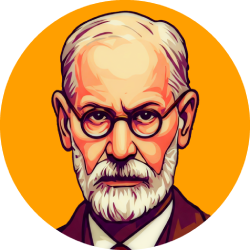Hello, I am João Barros, psychoanalyst and writer, and I am here to explore with you the fascinating theme of drives in the initial theoretical formulation. Passing are fundamental forces that drive our behavior and our decisions, often unconsciously. In this article, we will dive into the world of drives and understand how they influence our lives.
Introduction to drives
The drives are conceptualized as instinctive forces that drive us to seek satisfaction for our basic needs, such as hunger, thirst, sleep and sex. These forces are innate and universal, present in all human beings. However, drives can also be influenced by the environment and life experiences, which can lead to significant individual variations.
A simple example is the hunger drive. We are all hungry and we need to eat to survive. However, what we eat and how we eat can vary greatly from person to person, depending on our culture, education and personal preferences.
The role of drives in psychoanalytic theory
In psychoanalytic theory, drives play a central role. According to Sigmund Freud, drives are the basis for the development of personality and human behavior. He identified two main categories of drives: life drives (Eros) and death drives (tanatos). Life drives are responsible for our pursuit of pleasure, relationships and survival, while death drives are associated with self -destructive and aggressive behaviors.
This distinction is important because it helps us understand how drives can influence our choices and actions in a contradictory way. For example, a person may have a strong life drive that leads them to seek healthy relationships, but may also have a death drive that attracts it to self -destructive behaviors such as excessive use of substances.
Influence of drives on everyday life
The drives have a significant impact on our daily lives. They influence our decisions, from simple choices such as eating to more complex decisions as we relate to or what career to pursue. In addition, drives can also affect our mental and physical well-being.
A practical example is the way sexual drives influence our relationships. The search for intimacy and connection is a fundamental human necessity, but as we express this need can vary greatly. Some people may seek stable monogamous relationships, while others may prefer more open or experimental relationships.
Consequences of non -satisfied drives
When drives are not healthy, they can lead to negative consequences. The repression of drives, especially those related to sexuality and aggressiveness, can result in compulsive behaviors, anxiety, depression and even psychosomatic diseases.
A classic example is chronic stress. When we cannot satisfy our need for rest and relaxation, we can develop symptoms such as headache, gastrointestinal problems or even heart disease. This shows how non -satisfaction of drives can have serious physical and mental consequences.
In short, drives play a key role in our lives, influencing our choices, behaviors and well-being. Understanding and dealing with these forces in a healthy way is essential for a balanced and happy life.
By reflecting on drives, we can gain valuable insights on ourselves and how to improve our lives. If you are facing challenges related to your drives, whether in terms of mental health, relationships or other aspects, I hope this article has offered a useful perspective.
Remember that self-knowledge and acceptance are the first steps to a more authentic and satisfactory life. By addressing the drives with understanding and care, we can work to towards a healthier balance between our instinctive needs and our personal goals.


